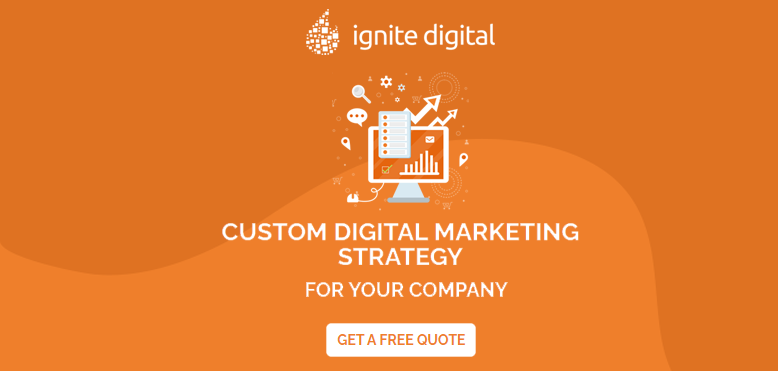In the vast and dynamic world of commerce, the ultimate quest for any business is to find my target audience and hold the attention of those who need its products or services. This is where the concept of knowing how to get to know your target audience comes in.
In this comprehensive guide, we’ll dissect the intricate process of identifying target audience and locating and engaging your ideal customer base to supercharge your business SEO strategy.
Harness these strategies on how to define your target audience, and you’ll turn the nebulous idea of ‘potential customer’ into actionable insight that drives business growth.
Understanding the Psychological Frameworks
Understanding the psychological frameworks that underpin consumer behavior is a fundamental prerequisite in identifying target audience.
To determine your target audience and find the ideal market for your offerings, it’s crucial to delve into the intricacies of human psychology. This process involves analyzing a myriad of factors, including:
- Demographic variables
- Psychographic characteristics
- Behavioral patterns
- Pain points and aspirations
This targeted approach on how to get to know your target audience not only optimizes resource allocation but also fosters a deeper connection between the brand and its audience, ultimately driving engagement, loyalty, and growth in an increasingly competitive marketplace.
Leveraging Data and Analytics
Leveraging data and analytics is crucial for businesses to accurately determine your target audience and remain competitive in today’s fast-paced, innovation-driven landscape.
Identifying target audience involves meticulous data collection and analysis to find my target audience and gain a comprehensive understanding of their preferences, behaviors, and pain points.
But how to define your target audience? Businesses must employ advanced data analytics tools and techniques to uncover valuable insights from vast amounts of raw data. Here are some essential steps to get to know your target audience:
- Collect data from various sources
- Analyze the data using sophisticated algorithms and machine learning models
- Create detailed buyer personas based on the insights gained from data analysis
- Continuously monitor and refine your target audience
By leveraging the power of data and analytics, businesses can make informed decisions, optimize their offerings, and deliver personalized experiences that resonate with their target audience to drive growth and success.
Building Customer Personas
Identifying your target audience is a critical first step in developing effective marketing strategies. To determine your target audience, begin by analyzing your existing customer base and gathering demographic data such as:
- Age
- Gender
- Income level
- Geographic location
Conducting surveys, focus groups, and interviews can provide valuable insights into how to get to know your target audience on a more personal level.
By synthesizing this information, you can learn how to define your target audience and create detailed customer personas that represent your ideal buyers. Some key steps in building customer personas include:
- Gathering and analyzing customer data from various sources
- Identifying common characteristics, behaviors, and pain points
- Developing detailed profiles that humanize your target audience
- Continuously refining personas based on new insights and market shifts
By investing time and resources into identifying target audience and creating robust customer personas, you lay the foundation for more targeted and effective search engine marketing efforts that drive business growth and foster long-term customer loyalty.
Social Listening and Engagement
In today’s dynamic and interconnected digital landscape, the strategic implementation of social listening and engagement has emerged as a critical component for businesses seeking to:
- Identify target audience segments
- Cultivate meaningful relationships
- Maintain a competitive edge
To effectively determine your target audience, a comprehensive approach is essential. By meticulously examining the digital conversations surrounding your brand, industry, and competitors, you can precisely define and find my target audience.
Moreover, proactively engaging with these online communities allows brands to foster trust, loyalty, and a genuine understanding of their target audience’s evolving needs. In essence, the fusion of social listening and engagement empowers organizations to:
- Identify and segment target audiences
- Develop data-driven strategies
- Continuously refine and adapt marketing approaches
- Cultivate authentic, two-way relationships with customers
- Stay attuned to emerging trends and shifts in consumer behavior
By embracing the power of social listening and engagement, businesses can unlock a new level of understanding of how to get to know your target audience, ultimately propelling their brand to new heights of success in the digital age.
Conducting Market Surveys
Conducting market surveys is a crucial step in identifying target audience and gaining a comprehensive understanding of their preferences, behaviors, and pain points.
To effectively determine your target audience, it is essential to design surveys that elicit specific, actionable insights. Consider the following steps to find my target audience through market surveys:
- Define clear objectives
- Select appropriate channels
- Craft targeted questions
- Analyze and segment data
- Iterate and refine
By leveraging market surveys, businesses can effectively learn how to define your target audience, enabling them to tailor their products, services, and marketing strategies to better resonate with their ideal customers and foster long-term growth in an increasingly competitive landscape.
Personalization and Targeted Content
The ability to effectively identify and understand your target audience has become a critical competitive advantage. It is essential to conduct thorough market research and analyze customer data to determine your target audience.
By leveraging advanced data analytics tools and techniques, you can gain valuable insights into how to define your target audience and create highly personalized content. Implementing a strategic approach to identifying target audience enables organizations to:
- Develop customer-centric products and services
- Optimize marketing campaigns for maximum impact
- Foster long-term brand loyalty and advocacy
- Enhance overall customer experience and satisfaction
- Drive sustainable growth and profitability
By investing in the necessary resources to find my target audience and how to get to know your target audience on a deeper level, companies can unlock the full potential of personalization and targeted content creation in today’s increasingly competitive landscape.
The customer’s journey is not linear, nor is it a one-off transaction. It evolves through various touchpoints.
By synthesizing these strategies into a cohesive plan, you will transform your nebulous pool of potential customers into a database of highly engaged, loyal patrons.
Remember, the process of finding and nurturing your target audience is ongoing. Stay agile, adaptive, and always in tune with the pulse of your audience, this is the key to enduring success in the dynamic world of business.






